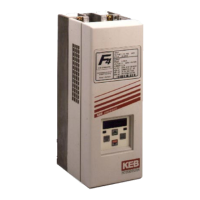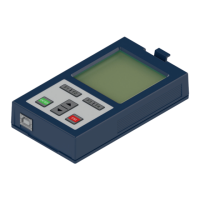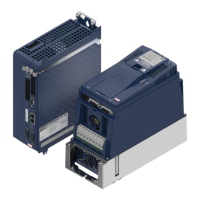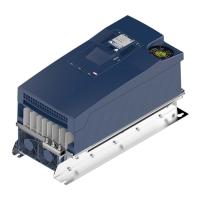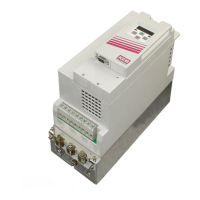7.5.1.1 Encoder Data
Adjusting the following encoder parameter LE04 Sample Rate for Encoder 1 will adjust
how fast the drive will get an encoder sample from the encoder to determine the speed of
the motor. Adjusting this value too high can create vibration due to too much feedback,
and having the value too low will cause the drive to not have enough control of the
elevator; however, these are extreme cases. Once the quality of the ride worsens, stop
adjusting the parameter in that direction.
• LE04 Sample Rate for Encoder 1 (Move values up or down one at a time and find
the best value for the ride quality).
7.5.1.2 Control Settings
After adjusting LE04 Sample Rate, the next step is to adjust the response rate of the
drive. The drive is given a command speed from the controller and the drive is monitoring
the motor speed from the encoder. If the motor speed and the command speed are
different, then the Speed Gain Values will adjust how fast the drive will attempt to correct
the speed. If the speed gain values are too high, then there could be a vibration/bouncing
in the car due to too much response and control. If the speed gain values are too low,
then the car will appear sluggish without enough control. Again, these are extreme cases.
Once the quality of the ride worsens, stop adjusting the parameter in that direction. If the
vibration is just in the acceleration and/or high speed, adjust the KP and KI accel gain. If
the vibration occurs in the deceleration portion of the curve, adjust the KP and KI decel
gain. First adjust the KP gains, and then move on to the KI gains to further fine-tune. If
the vibration/bouncing is during takeoff or leveling, adjust the KI Offset Gains. For further
directions see below.
• LC03 KP Speed Acceleration (Default is 3000, adjust by ±1000)
• LC04 KP Speed Deceleration (Default is 3000, adjust by ±1000)
• LC08 KI Speed Acceleration (Default is 250, adjust by ±100)
• LC09 KI Speed Deceleration (Default is 250, adjust by ±100)
Another parameter in the control settings that could be adjusted is LC30 Maximum
Torque. The parameter will allow the drive to output more torque to the motor if required
by the motor. If this value is too low, then when the motor requires more torque to meet
an aggressive S-Curve or to move more weight, the drive will limit the motor to this value.
Increasing this parameter will not damage the drive or the motor, it will allow the motor to
access more torque when needed. The drive will monitor the motor and will still fault if
there is an issue.
• LC30 Maximum Torque (Should be at least 250% when running automatic)
If there is vibration during takeoff or leveling into the floor, adjust the Speed Offset
Gain Values. The Speed Offset Gains work and act similar to the other Speed Gains but
are only effective during takeoff and leveling. Again, once the quality of the ride worsens,
stop adjusting the parameter in that direction.
• LC11 KI Offset Acceleration (Default is 3000, adjust by 1000)
• LC12 KI Offset Deceleration (Default is 1000, adjust by 300)
